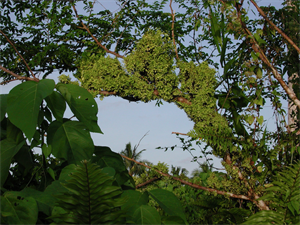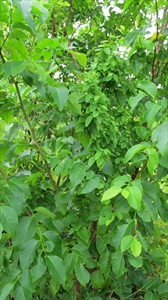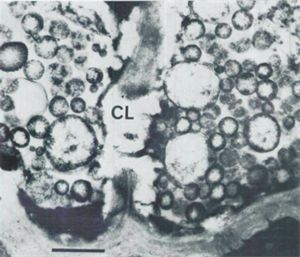- Narrow distribution. Malaita and Guadalcanal, Solomon Islands.
- Serious disease of Breynia, a secondary forest species, associated with a phytoplasma identified by electron microscopy. Note, phytoplasma are bacteria that grow only in the phloem of plants; none have so far been cultured in the lab.
- Shoots proliferate developing massive bunches of little leaves, along the trunk, but mostly along branches. Dieback eventually occurs, and death, as trees become overgrown by other species.
- Spread: leafhoppers or planthoppers are likely to spread the disease, but none identified so far.
- Cultural and Chemical control: none recommended. Breynia is not a tree of economic importance.









